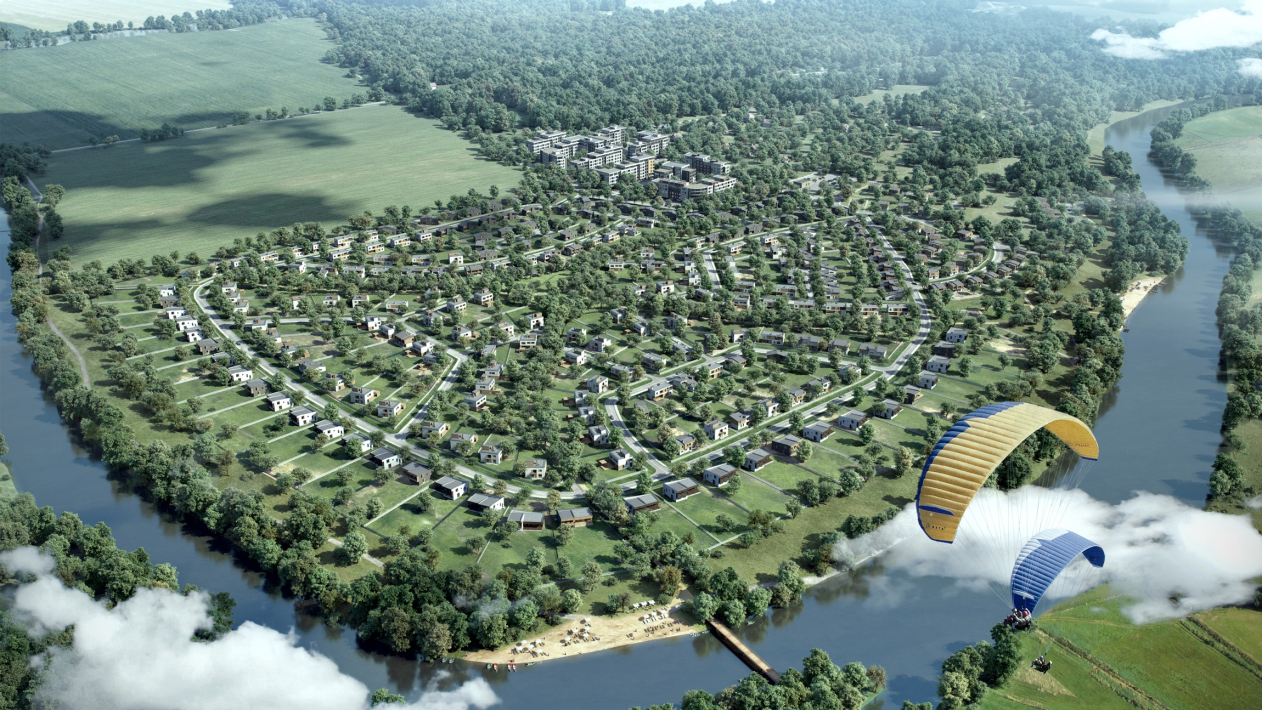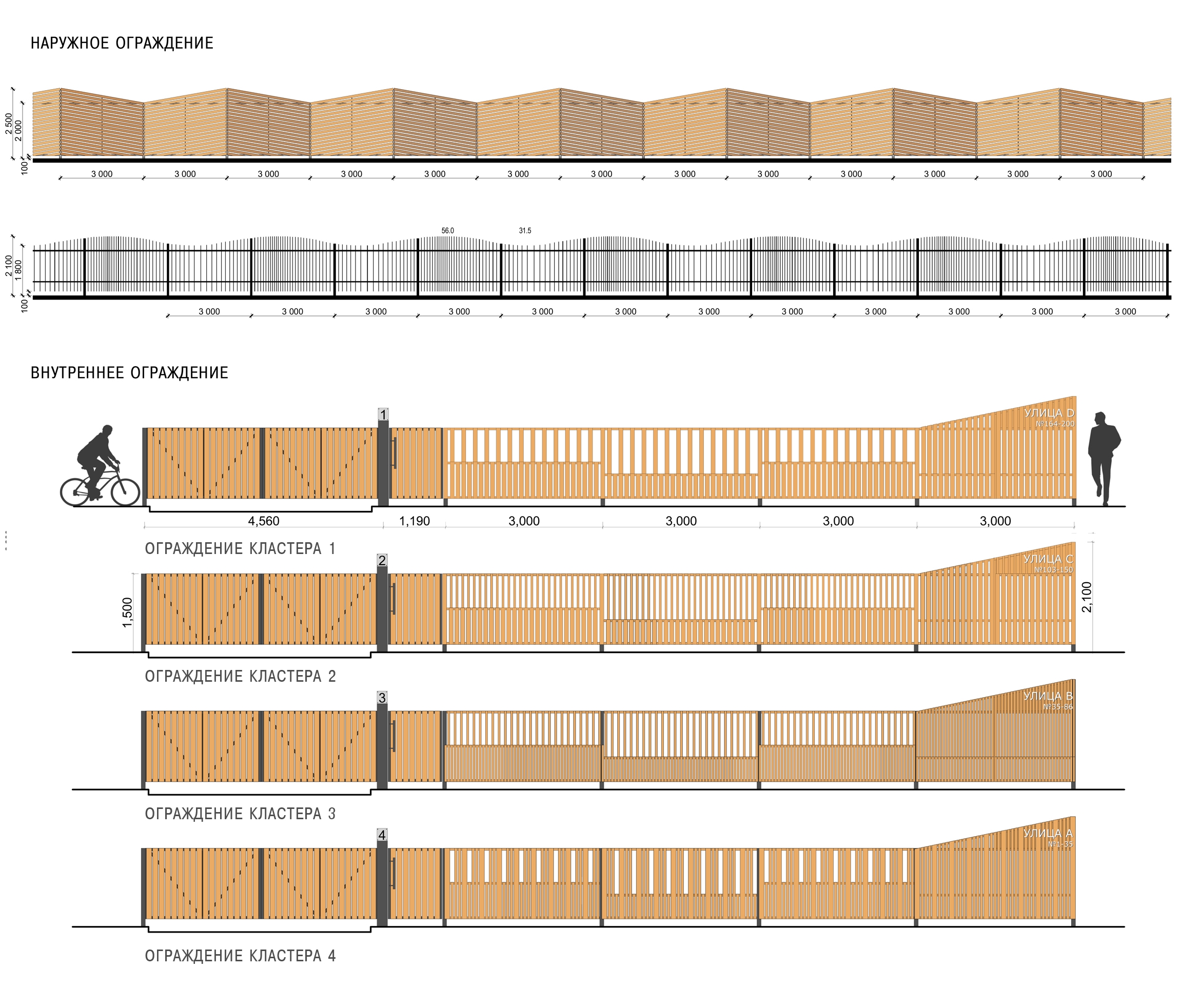The duplication of one and the same word, in many world languages,
stands for the superlative degree, the quintessence of this or that idea. The
proverbial "cafecafe" in Spanish, for example, guarantees that what
you are having is not just any coffee but the ultimate coffee experience in the
world. This also holds true for the settlement of "Reka-Reka" - not only
is it situated on the bank of the Moskva River, but also is inscribed into one
of its most picturesque bends, and it was specifically this artery that became
the main town-forming element of this complex master plan.
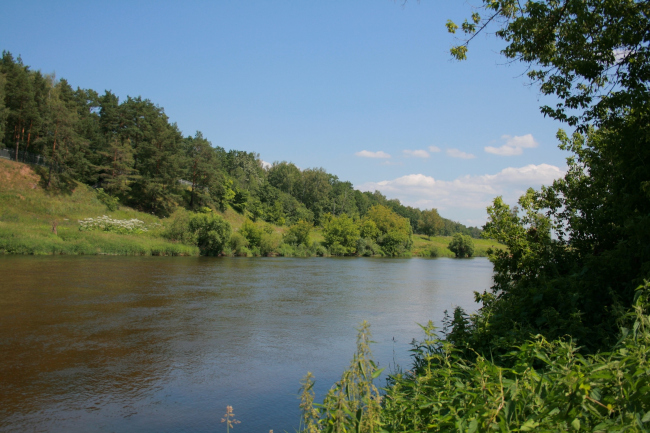
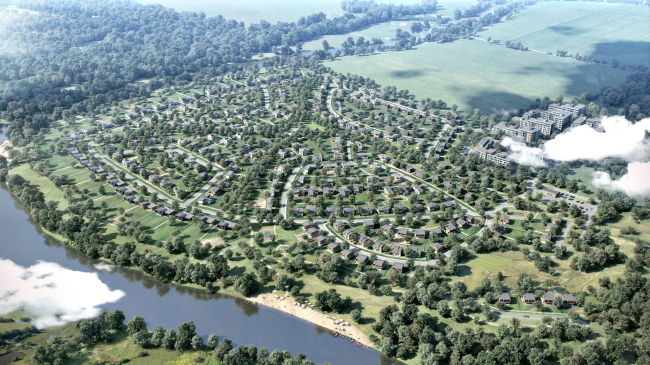
View form the south side
The settlement is located 48 kilometers away from Moscow Ring Road and
only two kilometers away from Zvenigorod, in the bend of the
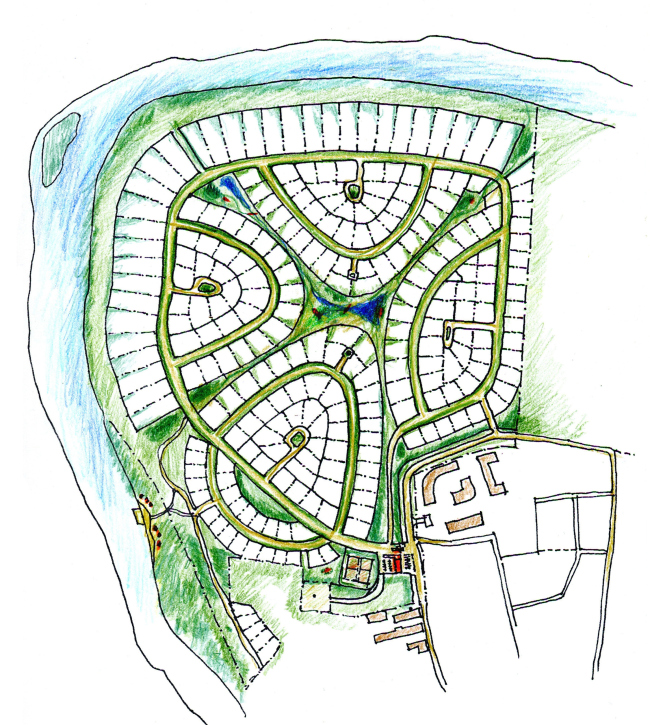
Out of the many possible scenarios of planning out this
"core", the architects ultimately chose the "island"
principle of placing the land sites. The four "islands" on the plan
are separated from each other with the diagonals of park and pedestrian
territories. These boulevards merge in the center to make a park with a
decorative creek and connecting it to the settlement's main recreational zones
- the beach and the fitness center, as well as with the landscaped embankments.
As a continuation of one of the boulevards, a small bridge is built leading to
the opposite bank covered with woody hills.
The green boulevards will be completely automobile-free which will provide for the comfort and safety of pedestrian walks. Apart from that, the project provides for each of the areas getting a landscaping treatment of its own with a certain type of trees and a corresponding name. "This is why we do not expect any navigation problems here. To answer the question "Where are you now?" one will only have to say, just by looking around, "At the maple boulevard!" - explains Konstantin Khodnev, adding that the structure of the semi-circular shoreline park strip and its adjacent diagonal boulevards will provide the opportunity for going for pedestrian walks, on the one hand, quite versatile in terms of their routes, and, on the other hands, equally accessible for the public.
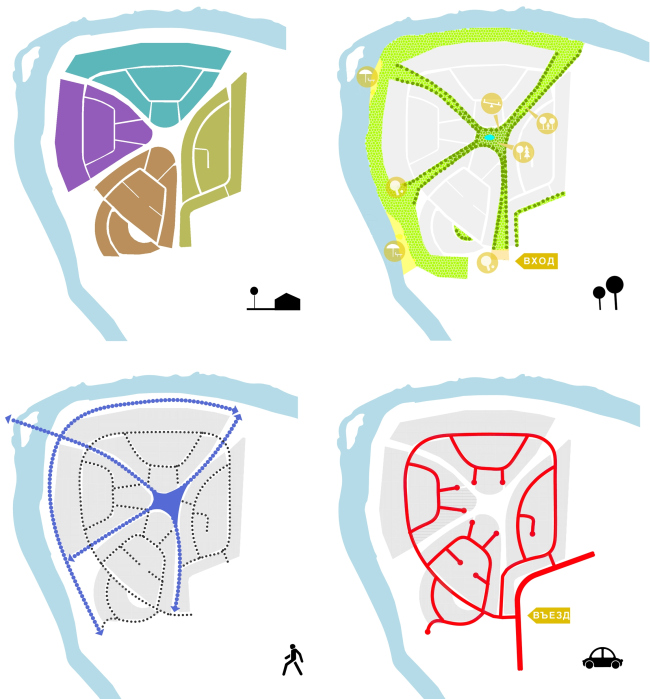
Totally, the settlement includes 220 land sites. The developer from the
very start made a decision that the settlement should consist of houses
executed in a single style - whole in overall impression and its ideology but
at the same time providing for
reasonable variety. This is why "Architectural Group DNK" got the
task of creating several lines of houses that would be different in size,
silhouette, and facade solutions but at the same time would match one another
and together added to the overall beauty of the settlement. And, because
"Reka-Reka" is a comfort class settlement, the houses were also to be
compact and at the same time functional and capacious. One will hardly dispute
the fact that DNK, a company that is equally successful both in creating
one-of-a-kind exclusive projects, and processes for developing large-scale
territories, was the perfect candidate for this task. On the basis of these
unified stylistic fundamentals, and the choice for the facade materials and
solutions, the architects build whole "bank of ideas".
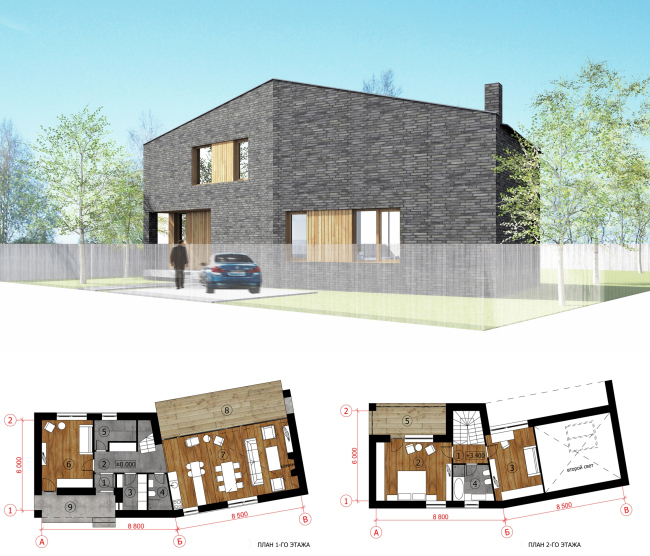
140 square-meter house.
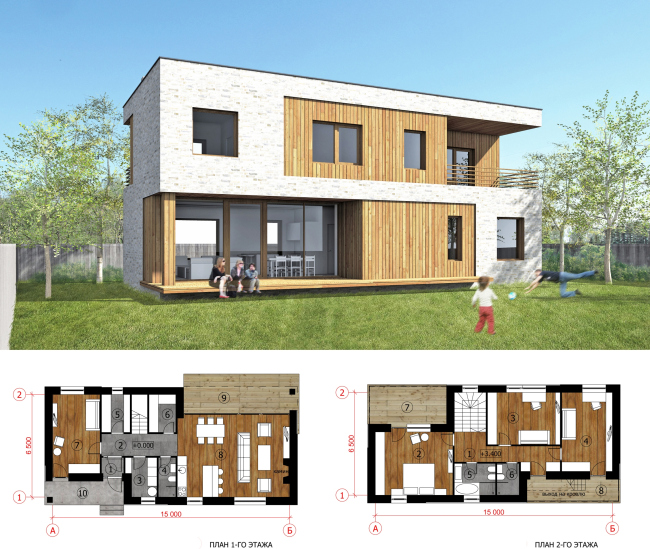
170 square-meter house.
"One of the most difficult challenges was finding the right "character" for these houses - Daniel Lorentz shares - We took the path of mixing our feelings - the sturdiness that is characteristic for these type of residences plus the lightness and casualness of the classic typology of a summer home. As a result, we got a small up-to-date villa for living outside the city that can be both a place of permanent residence as well as a pure summer home". Saying "up to date", the architect gives a very accurate description of the style of the settlement's future houses that will sport dynamic-looking cantilevers cut into the main parallelepipeds of the terraces and the bidirectional roof pitches. All the houses will be built from natural and long-performance, though not super-exclusive, materials: the facades will be executed from Flemish bricks and moisture resistant wood siding, almost each project getting the design of its own which should bring even more variety to the settlement.
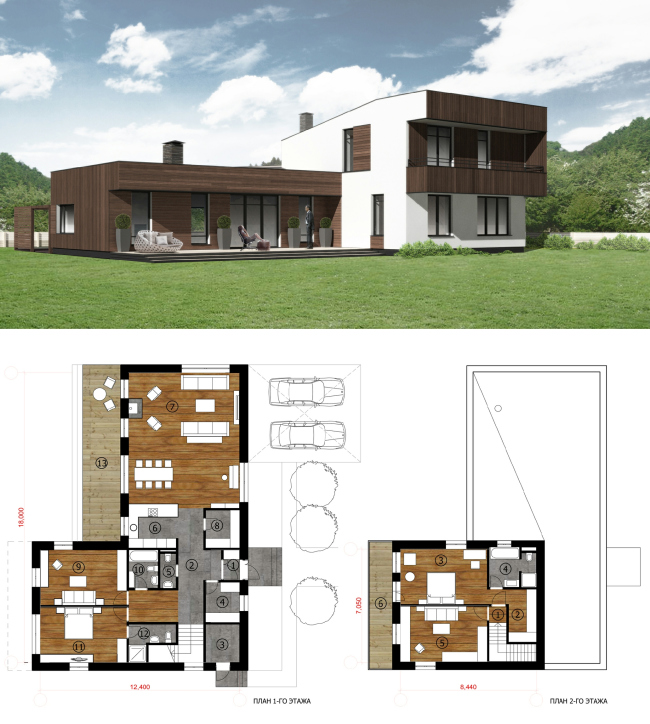
240 square-meter house.
Apart from the usual housing typology,
"Architectural Group DNK" developed two types of cottages with pilot
names of "transformers" or "houses to grow into". They are
designed for those who are still unsure of the necessity of a larger house or those
who has no financial possibility to build one immediately after purchasing the
plot of the land. "Transformer" consists of the main module (125-150
square meters) and the annex module (55 square meters) and is designed in such
a way that in terms of composition it looks complete both in the small and in
the augmented version. It should be mentioned here that the owner of the house
gets all the necessary "annex" papers even if he purchases only the
main module so he is able to add it to his house at any moment that he chooses:
the position of the house on the land site provides for such a possibility,
just as the structure of the main volume does - in this case, one of the window
openings is simply replaced by the door.
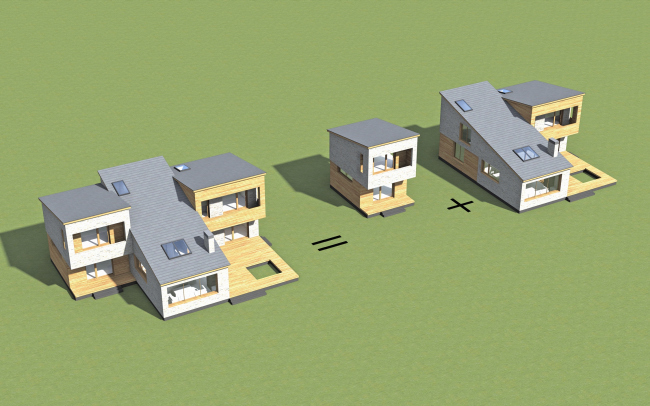
"House to grow into" concept
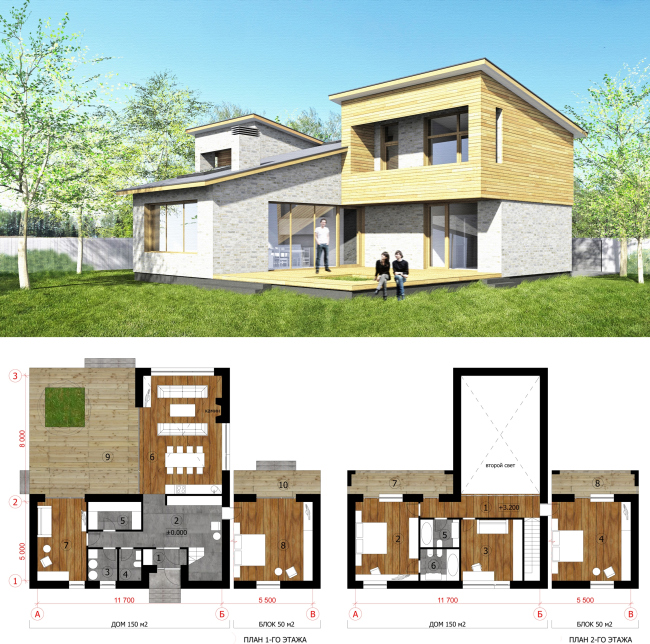
House to grow into
Presently, the settlement sees the road construction work in full swing,
the communications are being laid, and the pilot group of houses of different
types is being built. We hope that Moscow Region will indeed ultimately get a
settlement that the simple city inhabitants have dreamed of for so long - with
moderate-sized and inexpensive private houses that at the same time boast
well-thought layouts, high-quality facades of natural materials, and
"author" architecture.
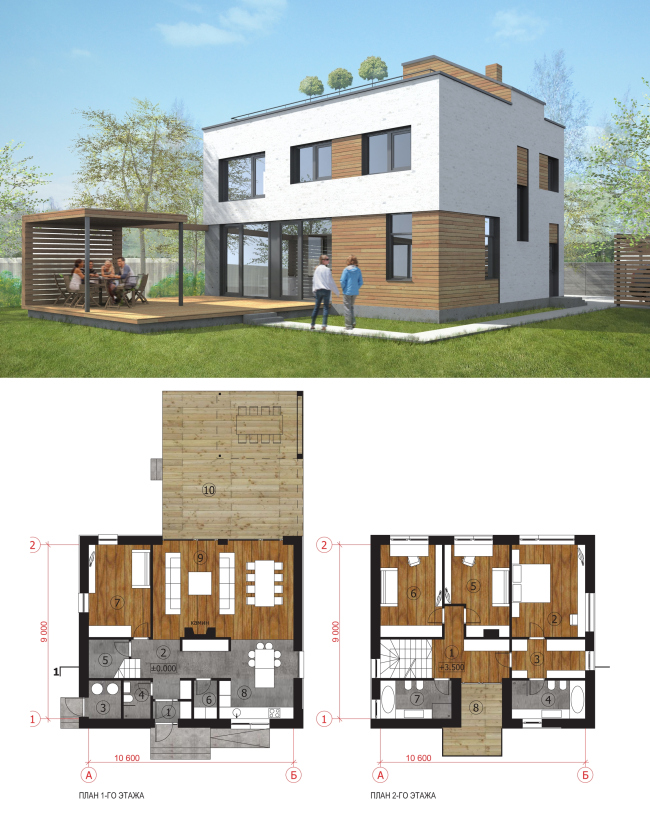
215 square-meter house.
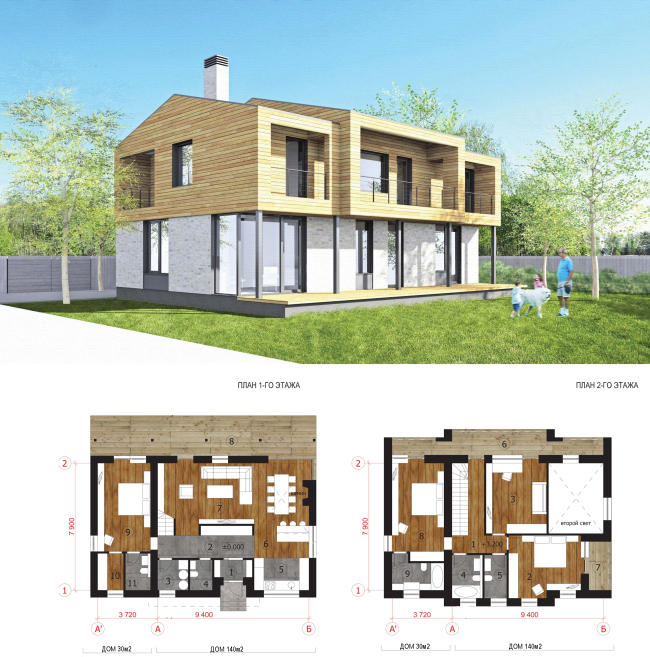
House to grow into. Type 2.
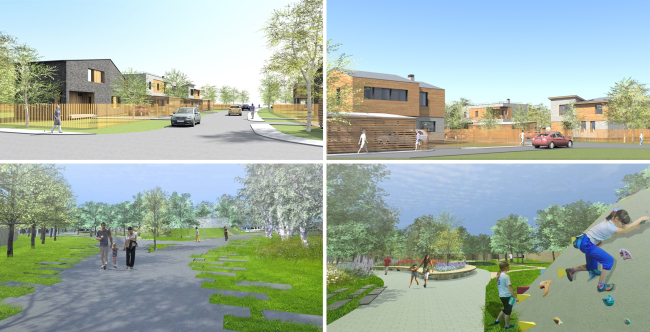
Streets and the central parking pert of the settlement

Landscape design elemrnts. Fences of the settlement and its land sites

